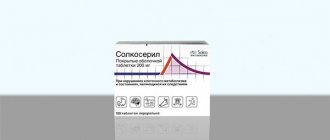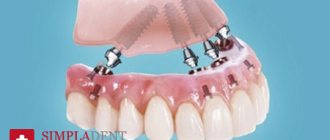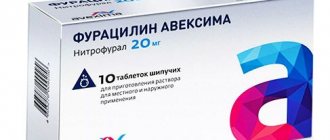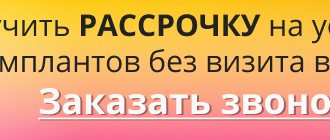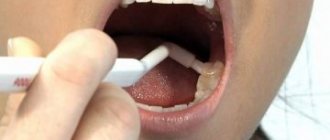Gum inflammation is accompanied by a number of painful symptoms that not only affect your well-being, but also affect your ability to chew and speak normally. To eliminate unpleasant signs in dentistry, special gels are used. They act directly on the oral mucosa and are slightly absorbed into the blood, which makes them safe for children.
Painkillers and anti-inflammatory gels can be used during teething (Baby Doctor) and for complex treatment of gingivitis or stomatitis.
Indications for use of dental gels
The dentist may prescribe the gel to a child or adult when there are signs of gum inflammation. The reason for using the gel will also be stomatitis, which affects not only the gums, but also the entire oral mucosa.
Dental gel will help with the following symptoms and diseases:
- pain, burning, redness along the edge of the tooth crown;
- bleeding gums after chewing hard foods and brushing teeth;
- thrush, fungal stomatitis or oral candidiasis;
- glossitis (inflammation of the tongue) and papillitis (inflammation of the dental papilla);
- teething in a child;
- growth of wisdom teeth, which is accompanied by gum damage.
The medicine can only be used topically. The gel is applied to the affected areas of the mucous membrane up to 4 times a day, according to the instructions. After treating the gums, it is recommended not to eat anything for several hours, and not to drink for at least half an hour, so as not to wash off the drug. Before applying, be sure to rinse your mouth with an antiseptic or regular mouthwash.
Some types of gels are homeopathic remedies, therefore, in case of severe inflammation and pain they will be ineffective (Malavit), others have a strong anti-inflammatory and analgesic effect. There is a large selection of dental gels; it is important to understand how they differ, and which one is better for a particular problem.
Strengthen the effect of the gel by combining it with other products
In order for the baby to quickly stop being capricious, start smiling and playing, try to use other methods together with the Cholisal gel when teething. As reviews from experienced parents show, some are very effective:
- massage: in addition to the gel itself, which parents rub into the child’s gums, you can massage using a cool teaspoon. Naturally, it must be clean and disinfected. Just gently touch the sore gums with its convex side. You can also massage the mucous membrane using silicone fingertips, which are commonly used to clean the oral cavity of babies or the first tooth that appears,
- teethers: these are silicone devices in the form of rings, various figures, and they, like silicone finger guards, can be bought at the pharmacy. For safety, it is advisable that they be without liquid filler. Before giving the item to your baby, place the teether in the refrigerator for a while.
Silicone teethers will help your baby during this period - make your own teethers: for these purposes you can use hard, non-allergenic vegetables and fruits. For example, cut an apple into small slices, cool it and offer it to your baby. If the child is too small, then take care that he does not choke - wrap the fruit in special gauze or a mesh bag (these are again sold at the pharmacy).
If you use Cholisal, then know that it enhances the effect of antipyretic and anti-inflammatory drugs. Therefore, you can simultaneously give the baby Nurofen (or Panadol) and also apply the gel topically. But be careful, always strictly follow the instructions so as not to cause an overdose and worsen the child’s condition.
Which gel is better?
A well-known representative is Dental. This is an anti-inflammatory gel; it contains corn oil, which promotes the formation of a protective barrier on the mucous membrane, which allows damaged cells to recover faster and prevent complications.
It is recommended to use Dental up to 4 times a day, applying it in a thin layer to the entire surface of the inflamed gum. This drug will also help those who are faced with denture stomatitis. The drug accelerates regeneration, reduces inflammation and relieves pain.
Parodium is another good remedy for inflammatory diseases of the oral mucosa. It is both an antiseptic and has an anti-inflammatory and hemostatic effect. Indicated for the treatment of periodontitis, gingivitis, traumatic and bacterial stomatitis.
Kalgel and Baby Doctor are one of the safest products for children during teething. They relieve pain, cool the gums, and begin to act almost instantly. Their only drawback is the short duration of pain relief; they can relieve unpleasant symptoms for up to 30 minutes.
The most well-known representatives, which are most often recommended by dentists, are the gels Metrogyl Denta, Asepta, Cholisal, Solcoseryl and Kamistad.
A few facts about teething
- ideally, when the first milk teeth appear at 6 months: but if their eruption is delayed by a couple of months, i.e. falls at eight months of age, then there is no need to worry either - this situation is within normal limits. There is also no need to worry when the first milk units appear a little earlier, for example, at 4-5 months,
- If the baby is 10 or more months old, and the first teeth are not pleasing with their appearance, then it’s time to see a dentist, because this may indicate a violation of the formation of the jaw system,
- In most cases, the central incisors appear first on the lower jaw, then their antagonists erupt on the upper jaw. Afterwards, the lateral incisors delight with their appearance, then the fangs, which are also called “eye” ones. If the order is broken, then there is no need to panic, because... This process can be individual for each person. But it is still necessary to pay close attention to this point. For peace of mind, visit your dentist.
The photo shows the timing of the eruption of baby teeth.
Read the article on the topic: the main causes of cough and snot during teething.
Metrogil Denta
Contains an antibacterial substance - metronidazole and an antiseptic - chlorhexidine. It is used to relieve gum pain during stomatitis, after dental treatment, during an inflammatory process due to infection or traumatic injury.
The gel is practically not absorbed, therefore it is safe for treating the oral mucosa of a child. But at the same time, the low concentration of the active ingredient makes it not the most effective against severe inflammation; after treatment, there may be a relapse.
Cholisal - instructions for use
A strip of gel 1 cm long for adult patients and 0.5 cm for children is applied to the index finger and rubbed in a circular motion without pressure into the oral mucosa at the site of the lesion. For periodontal diseases, Cholisal is applied to periodontal pockets or used as a compress, or the gums are gently massaged twice a day.
For stomatitis in adults, Cholisal is used locally 2-3 times a day before meals, after and before going to bed. If you feel a burning sensation at the application site, do not worry, it will go away in 5 minutes. Hands should be washed before use.
No cases of drug overdose were found. Cholisal is not recommended to be swallowed; the drug is for external use only. If a lot of gel gets into your mouth, rinse with water. If it enters the stomach, rinsing is recommended as indicated. If the instructions are followed, the product does not react with other medications.
Solcoseryl
One of the most popular gels in dentistry is Solcoseryl. This remedy is classified as a medicine (while many others act as balms), therefore it is recommended by dentists for the treatment of such unpleasant pathologies as oral candidiasis, viral, traumatic and necrotizing ulcerative stomatitis.
Solcoseryl gel will help get rid of pain; the active ingredients in its composition stimulate metabolic processes in the affected tissues, which accelerates regeneration.
Cholisal: application and principle of action
The gel form used in the treatment of dental diseases allows for complex treatment of the oral cavity, since the active substances of the drug are capable of:
- block inflammatory mediators in soft tissues;
- effectively suppress the activity of pathogenic microflora;
- anesthetize affected tissue areas.
Therefore, experts recommend Cholisal as one of the most effective means to eliminate several consequences of diseases.
In addition, the effectiveness of the composition can be enhanced by prescribing the use of the drug in conjunction with prescribed rinsing procedures with active antiseptics, for example, chlorhexidine.
In addition to its excellent healing properties, the use of the gel helps to provide:
- prolonged effect of the drug on the mucous membranes;
- high efficiency in eliminating inflammatory phenomena;
- relief of painful sensations, which is facilitated by the rather viscous consistency of the composition, which helps the active substances to be quickly absorbed into the affected tissues, fighting foci of inflammation.
However, Cholisal, the price of which is quite high, cannot be used without appropriate doctor’s recommendations.
Cholisal gel, the instructions for use of which include purchasing the medicine without a prescription, can be successfully used to treat diseases in people of any age, but the smell and taste of anise oil can cause excessive salivation, therefore Cholisal is not recommended for use in infants.
Cholisal gel: instructions for use and indications for use
The antimicrobial, anti-inflammatory and analgesic effectiveness of the drug allows specialists to successfully use the drug in the treatment of such oral diseases as:
- gingivitis;
- periodontitis;
- inflammation during the eruption of wisdom teeth;
- inflammation of the mucous membranes as a result of wearing dentures;
- traumatic injuries to the oral mucosa;
- stomatitis,
It also helps reduce pain when molars appear in children.
For gingivitis and periodontitis
Based on the instructions for use of the drug, experts recommend using the gel in combination with other medicinal formulations and therapeutic measures.
So, when gingivitis or periodontitis is detected, in addition to cholisal, the following is usually prescribed:
- removal of deposits;
- antiseptic rinsing procedures;
- using special cleaning pastes to reduce inflammation;
and in severe cases of the disease - antibacterial therapy.
Self-medication, which involves using only a gel composition, will not help complete recovery from the disease, but the disease can take a chronic form, which can cause tooth loss.
The course of treatment with Cholisal gel prescribed by the dentist is carried out for ten days. Applications are carried out twice a day, usually in the morning and evening hours, after eating, since the procedure requires:
- thorough brushing of teeth;
- mouth rinses with antiseptic agents;
- drying the mucous surfaces of the gums
and only after this, apply the gel to the areas of inflammation.
The composition is applied both to the front and back walls of the gums, located on the side of the tongue, and such treatment requires avoiding the use of liquid for half an hour after the end of the procedure.
Some ingredients of the gel help increase salivation, so saliva should be swallowed without much fear, since the drug causes virtually no side effects.
List of analogues and substitutes
Cholisal costs about 450 rubles in pharmacies. If you wish, you can find cheaper analogues. There are many drugs that have a similar effect. They can also be used for pain relief during teething in children.
| A drug | Active substance | Manufacturer | Price |
| Kamistad | laureth-9 and chamomile extract | STADA Arzneimittel AG, Germany | 300 rubles |
| Dentol baby | benzocaine | PHARMACEUTICALS INC., Canada | 200 rubles |
| Kalgel | cetilleridine chloride and lidocaine | Glaxosmithkline, UK | 350 rubles |
| Metrogil Denta | metronidazole benzoate | Unique Pharmaceutical, India | 230 rubles |
| Solcoseryl | solcoseryl | MEDA Pharmaceuticals, Switzerland | 640 rubles |
| Baby Doctor First teeth | herbal extracts | Hatzi Hazakot, Israel | 350 rubles |
| Dentinox | lidocaine hydrochloride and chamomile extract | Dentinox, Germany | 370 rubles |
The difference between these drugs is not only in the active ingredient and price. It is problematic to say unequivocally which one is best to use to eliminate pain. Each of them has its own advantages and disadvantages.
Disadvantages of the medication
No matter how effective this drug is, it has certain disadvantages. For example, for a tube of small volume you will have to pay a relatively large amount. In addition, among its disadvantages:
- Pronounced aroma and taste of anise. Due to this, salivation often becomes abundant, and the mucous membranes of the oral cavity become irritated.
- Presence of contraindications.
- Possible side effects.
No other shortcomings have been identified in Kholisal. It has proven itself to be an effective and efficient drug. Most often it is well tolerated.
Possible consequences of use
The medication contains anise oil, which can cause excessive salivation. For adults, this phenomenon does not pose any danger. With young children the situation is somewhat different.
Infants cannot yet swallow all the saliva that is released. Liquid begins to flow out of the mouth, causing irritation of the skin. The child may choke and begin to cough heavily. Therefore, the topical remedy should be used with caution.
Negative changes are also observed if the rules for using the medicine are not followed. The most common violation is neglect of sterility. If the medication is applied with dirty hands, there is a risk of infection.
Naturally, this does not bring relief. The condition is getting worse. Additional antimicrobial therapy is required. The course of treatment will be longer.
Clinical experience with the use of external spray in children with chickenpox
Chickenpox is a viral disease characterized by moderate general intoxication, a benign course, vesicular exanthema, long-term persistence of the virus in the form of a latent infection, when activated (usually after 60 years) it occurs in the form of herpes zoster (herpes zoster) [1].
Chickenpox was described by Italian doctors V. Vidius and F. Ingrassia back in the 16th century. However, it was considered a mild variant of smallpox. After the smallpox epidemic in 1863–1874. chicken pox was recognized as an independent disease. In our country, N. F. Filatov, V. N. Vertsner, T. T. Struke, M. A. Skvortsov, A. G. Rakhmanova, Yu. V. Lobzin, B. M. made a great contribution to the study of this infection. Taitz [2].
The incidence of chickenpox remains high due to the lack of mass active immunization of children. In total, in 2022, Rospotrebnadzor registered 837,829 cases of the disease (571.22 cases per 100,000 population), of which 768,762 cases were in children under 14 years of age (about 3,000 cases per 100,000 children of this age or more than 91% of all cases ). The incidence rate of chickenpox in adults ranges from 300 to 800 or more per 100,000 population, and in children it is 7,000 per 100,000 child population [3].
Chickenpox is a childhood infection with a very high contagiousness. Children in the first 2–3 months of life rarely get sick, but in the absence of immunity in the mother, even newborns can get sick. After an infection, strong immunity is formed. Recurrent diseases are extremely rare.
The only source of infection is a sick person, including someone with herpes zoster. The incubation period is from 10 to 21 days.
The causative agent is herpes virus type 3. Contains DNA, the size of the nucleocapsid is 150–200 nm. Unsustainable in the external environment. The infection is transmitted by airborne droplets, and infection with air currents over a long distance (up to 20 meters) is possible; it is “carried by the wind,” which explains the name of the disease. Infection is also possible through contact and transplacental routes - from mother to fetus. The patient is contagious 2 days before the appearance of the rash and until the 5th day from the time the last element appears.
The main pathomorphological changes are observed in the skin and mucous membranes. In addition, the virus is neurotropic. The number of elements varies among patients; the appearance of a maximum of 800 elements has been described. False polymorphism of the rash is characteristic - since the rash appears in spurts and the skin elements go through the following stages of development: spot, papule, vesicle, crust; and in the case of suppuration of the vesicle - a pustule with deep skin lesions, which can lead to the formation of small depressions in the center of the pustule and, accordingly, a scar.
In accordance with the classification, the typical (skin) form is divided by severity into mild, moderate and severe. The atypical form includes the rudimentary, hemorrhagic, gangrenous, generalized (visceral) form [4].
Complications are rare and are divided into specific ones associated with the direct effect of the virus: encephalitis, meningoencephalitis, myelitis, pneumonia, nephritis, myocarditis, keratitis, Reye's syndrome, arthritis, laryngitis; and nonspecific, caused by the addition of a bacterial infection: phlegmon, abscess, streptoderma, impetigo, stomatitis, erysipelas, conjunctivitis, lymphadenitis.
Diagnosis is based on a typical clinical picture. In everyday practice, specific methods of laboratory diagnostics are used (microscopic - detection of Aragan bodies (clumps of the virus) in smears of vesicular fluid stained with silver according to Morozov using conventional or electron microscopy; polymerase chain reaction to detect viral DNA in vesicular fluid and blood, serological diagnosis - binding reaction complement and enzyme-linked immunosorbent assay, immunofluorescence method for determining chickenpox antigen in fingerprint smears from the contents of vesicles.The virus can be isolated on human embryonic cell cultures.
In the treatment of patients with chickenpox, it is very important to observe hygienic measures, the purpose of which is to prevent secondary infection. During the period of rash and fever, bed rest is required. The elements of the rash are lubricated with a solution of aniline dyes. Antihistamines are indicated. Antiviral drugs (acyclovir, vidarabine) are effective in treating chickenpox; interferons and immunostimulants are used - meglumine acridone acetate (Cycloferon).
In severe cases of the disease with severe symptoms of intoxication, detoxification therapy is carried out. Antibiotics for chickenpox are prescribed in case of secondary bacterial infection and purulent complications.
Since chickenpox rashes are usually accompanied by severe itching, it is important in local therapy to use a drug that reduces the intensity, relieves itching and at the same time helps prevent secondary bacterial infection [5].
The aim of our study was to evaluate the clinical effectiveness of topical application of Vetrigard skin spray in children with chickenpox.
Vetrigard spray forms a protective layer on infected skin, acting as a barrier, provides skin protection, prevents infection, has a calming and cooling effect, instantly relieving itching and thereby preventing the appearance of scars.
The mechanism of action is due to the composition of the Vetrigard spray (a complex based on plant extracts of olive leaf and spirulina, which has proven antimicrobial activity (including against Staphylococcus aureus)). Zinc oxide - has a drying and healing effect. Bisabolol - has a calming and anti-inflammatory effect. Glycerin - provides hydration. Polydecanol has a local anesthetic and analgesic effect [6].
We observed 30 children with chickenpox (Table 1): from 6 months to 1 year - 3 girls, 4 boys; from 1 year to 3 years - 4 girls and 5 boys; from 4 to 7 years - 4 and 7, respectively; a boy 11 years old and 2 girls 9 and 14 years old.
Schoolchildren - 5 people; those attending kindergarten - 8; those who do not attend children's organized groups - 17 people.
The patients were treated in the children's infectious diseases (boxed) department of the city multidisciplinary clinical hospital No. 20 in Rostov-on-Don.
All children became acutely ill. On average, patients were hospitalized on the third day of illness (the earliest was on the first day, and the earliest was on the fifth day). The average time of hospital stay was 8 days (minimum - 6, maximum - 13 days).
25 children (83.33%) were diagnosed with “varicella, typical form, moderate course”; 1 child (3.33%) had a mild course; in 4 (13.33%) it was severe.
In a 7-year-old boy with a mild course of chickenpox (hospitalization for epidemic reasons), the intoxication syndrome was mildly expressed, the temperature increase, even against the background of a rash, did not exceed 38.5? WITH.
All patients with a moderate course of the disease, from the first day of illness, had a moderately severe intoxication syndrome: an increase in body temperature - up to a maximum of 39? C, weakness, lethargy, loss of appetite. In young children, moodiness, irritability, and anxiety were noted. Schoolchildren complained of headaches.
Severe intoxication was observed in children with severe chickenpox. Did the fever exceed 39.6? C, exanthema abundantly covered the entire surface of the body, and there were also multiple blistering rashes on the mucous membranes. In a boy (2 years 7 months), the disease was complicated from the first day by phlegmon of the right thigh, which required consultation with a pediatric surgeon and appropriate surgical treatment upon admission to the children's infectious diseases department.
Most often, exanthema appeared on the second day of the disease against the background of a fever of about 39? C - in 21 children (70%). However, in 5 children (16.7%) the rash appeared on the first day, and in 4 (13.3%) children the rash was noticed on the third day of illness.
There were certain difficulties in objectively assessing the intensity of itching, since the groups of patients (both study and control) were heterogeneous in age composition and were represented by a large number of young children.
Treatment activities were carried out in accordance with clinical recommendations (treatment protocol) for providing medical care to children with chickenpox. The volume of drug therapy depended on the severity of the condition. Acyclovir was prescribed as an antiviral drug in an age-specific dosage. According to indications, infusion therapy, parental antibacterial therapy, antihistamines - chloropyramine (Suprastin, tablets), cetirizine (Zodak, drops for oral use), symptomatic therapy - antipyretic drugs were prescribed for detoxification purposes [7].
A 1% alcohol solution of brilliant green was used as an antiseptic and disinfectant to extinguish the elements of the rash in the control group, and Vetrigard skin spray was used in the study group. The spray was applied to the children's skin 3 times a day, spraying from a distance of 10–15 cm.
In all patients, skin itching was relieved on the first day of treatment. The appearance of a crust at the site of the vesicles - every other day in 16 children (53.3%), after 2 days - in 14 (46.7%).
The control group consisted of 26 children, the only difference in the treatment of which was a drug for local treatment of the skin: patients received a traditional 1% alcohol solution of brilliant green 3 times a day (from 6 months to 1 year - girls - 2, boys - 6; from 1 years to 3 years old - 2 girls and 7 boys; from 4 to 7 years old - three children of different sexes; boys 11 years old and 9 years old and a girl 10 years old) (Table 2).
4 children (15.4%) were diagnosed with a mild course, 21 children (80.8%) with a moderate course of chickenpox, and 1 (3.8%) with a severe course. The appearance of a crust in the control group was observed on average on the fourth day (from the third to the fifth day) from the start of treatment. Disappearance of itching - on average after 3.7 days (from the third to the fifth day) (Table 3, 4).
At the same time, patients in the control group noted an unpleasant burning sensation that appeared briefly after using a 1% alcohol solution of brilliant green, a feeling of dryness, “tightness” of the skin, as well as an undesirable cosmetic effect due to its long-term presence on the skin (“difficult to wash off”), especially on open parts of the body (on the face).
No adverse reactions (local or general) associated with hypersensitivity to drugs were observed either in the study (use of Vetrigard spray) or in the control (1% alcohol solution of brilliant green) groups of patients.
Thus, the results of a comparison of the results of local treatment of a 1% alcohol solution of brilliant green and Vetrigard skin spray for children with chickenpox are as follows:
- Skin itching stops much faster when using Vetrigard spray - in all children on the first day (almost “instantly”). When using a 1% alcohol solution of brilliant green - on average for 3.7 days.
- Crusts at the site of the vesicles form faster when using Vetrigard spray - on the first or second days of treatment. The appearance of a crust in the control group was observed on average on the fourth day.
- Additional positive effects when using Vetrigard spray (as opposed to a 1% alcohol solution of brilliant green) can be considered: absence of a feeling of dryness, “tightness” of the skin; additional hydration; absence of a burning sensation that appears immediately after extinguishing the elements of the rash; absence of undesirable cosmetic effect; Clothes, underwear and bedding are easy to wash, since Vetrigard spray is colorless.
Literature
- Guide to infectious diseases / Ed. Yu. V. Lobzina. St. Petersburg, 2001. P. 429.
- Infectious diseases in children: Textbook for pediatric faculties / Ed. prof. V. N. Timchenko and prof. L. V. Bystryakova. 2001.
- Kharchenko G. A., Kimirilova O. G. The course of chickenpox in adults and children // Children's infections. 2022. pp. 56–60.
- Uchaikin V.F., Nisevich N.I., Shamsheva O.V. Infectious diseases in children. M.: GEOTAR-Media, 2011. 688 p.
- Infectious diseases in children / Ed. E. N. Simovanyan. Rostov-on-Don: Phoenix, 2007. 766 p.
- Instructions for the drug "Vetrigard spray".
- Lobzin Yu. V. Clinical recommendations (treatment protocol) for providing medical care to children with chickenpox. GBOU VPO SPbSPMU MZ RF, FSBI NIIDI FMBA RUSSIA, 2015.
E. G. Pedchenko*, 1, Candidate of Medical Sciences A. N. Grigorenko**
* MBUZ CDC "Health", Rostov-on-Don ** MBUZ GB No. 20, Rostov-on-Don
1 Contact information
DOI: 10.26295/OS.2019.60.92.010
Clinical experience with the use of external spray in children with chickenpox / E. G. Pedchenko, A. N. Grigorenko For citation: Attending physician No. 11/2019; Page numbers in the issue: 39-41 Tags: chicken pox, childhood infections, immunity
Side effects and overdose
There were no cases of overdose with this drug. If this happens, you should immediately rinse your mouth with clean water. If necessary, vomiting should also be induced. If you are hypersensitive to salicylates, the following changes are possible:
- excessive sweating;
- gagging;
- nausea;
- tinnitus;
- urticaria or erythema;
- dizziness.
Side effects are extremely rare. A short-term burning sensation may occur after applying the gel. Unpleasant sensations disappear on their own after 3-5 minutes. It is also possible that an allergic reaction may develop.
Actions in case of eye contact
When using the gel, unexpected situations may arise. For example, the product accidentally came into contact with the mucous membranes of the eye. In this case, you need to urgently take the following measures:
- Rinse your eyesight with plenty of water. It should be cold, but boiled.
- Rinse for at least a quarter of an hour. This will be enough to completely wash the product.
- Blot mucous eyes with a napkin.
- Place anti-inflammatory drops into both eyes. Sulfacyl sodium, Levomycytin and their analogues can be used.
After washing the eye, it is allowed to use ointments rather than drops. They are applied to the lower eyelid. Excellent results are observed when using Hydrocortisone ointment. After such procedures, it will be possible to eliminate redness, swelling and burning.
